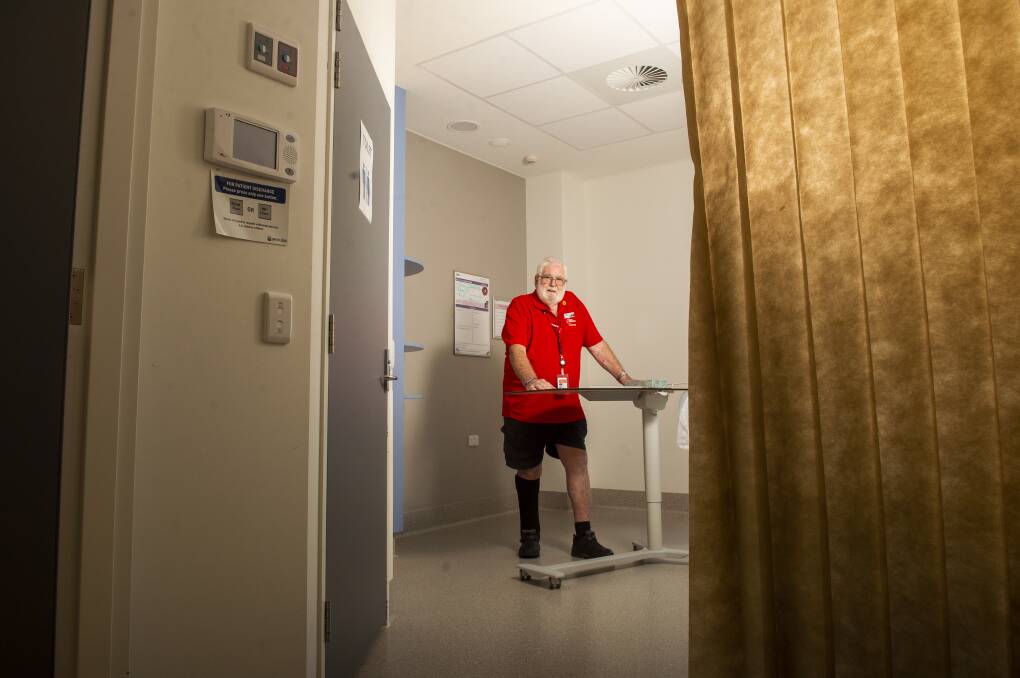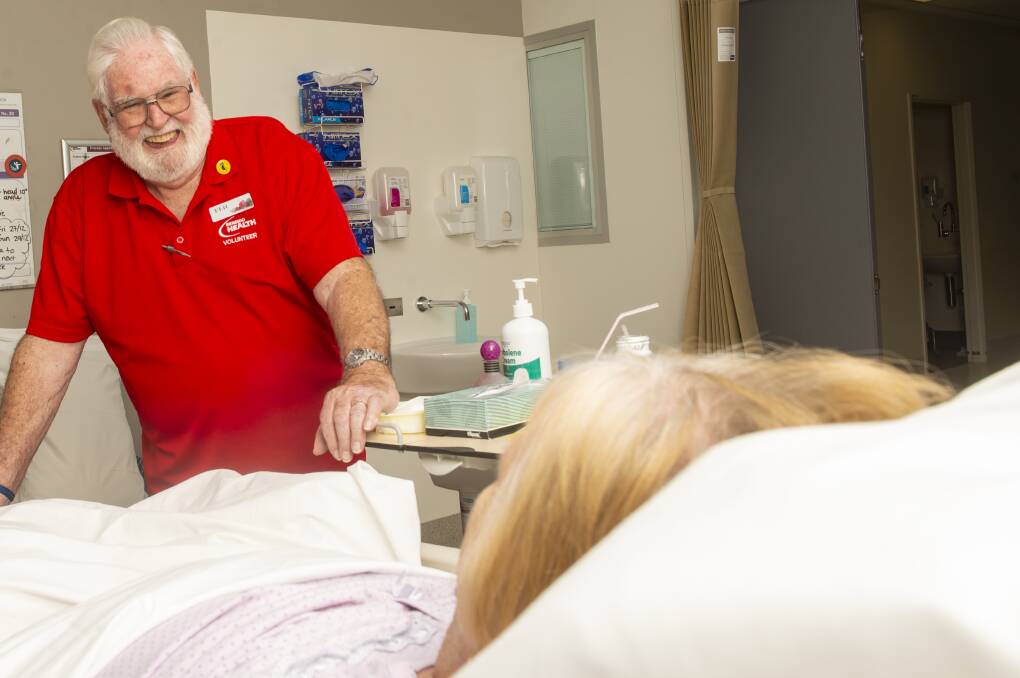
In 2015 Ken Longford discovered that the bones in one of his feet had "turned to gravel" and had to be amputated.
Subscribe now for unlimited access.
or signup to continue reading
So began a journey that finished with him returning to Bendigo Hospital as a guide for others.
Mr Longford has volunteered at Bendigo Health for three years and spends much of his time with patients.
There's one thing that keeps him coming back.
"To give," Mr Longford said.
Rehabilitation units across the nation see a lot of amputees - one 2017 study put the number at 8000 every year.
Cancers, accidents and the need to correct failed surgeries are among the many reasons people need amputations, but support group Limbs4Life said diabetes complications are responsible for a majority of cases.
"Australia has an appalling record when it comes to lower limb amputations resulting from type 2 diabetes," it said.
"In fact we have the second highest rate of diabetic related amputations in the developed world."
We live in a world today where we hear of people 'paying it forward' by buying two cups of coffee and giving one to someone who can't afford it. This is just one of those 'similar but different' things. We need people who can give that encouragement through their life experiences.
- Ken Longford, Bendigo Health volunteer
Mr Longford's leg was removed days after he got out of bed and noticed every second step he took was leaving a blood spot on the floor.
Months earlier, he had been incorrectly diagnosed with gout - a complication of diabetes - and told to cut out the red wine and get plenty of exercise. So he and his wife went on a holiday with lots of walking.
Doctors realised too late that Mr Longford actually had Charcot foot, a condition that had weakened the bones in his leg.
"The bones had turned to gravel through lack of blood supply. So they just chewed through the sole of my foot," he said.
As he recovered from surgery he met a woman called Lou Richardson, who was helping fellow amputees adjust to life after surgery.
"She was a mover and shaker. She had her car modified and toured the district visiting amputees giving encouragement," Mr Longford said.
"She was the one who started the Bendigo Amputee Social Group, where we have a monthly get-together over a meal at a pub. We all joke about going in legless. Sometimes we come out the same way."
More news: Man accused of drub trafficking denied bail
Even with the dedicated and professional staff at Bendigo's hospital, amputees need the help of someone who has been through what they are facing, Mr Longford said.
"None of the staff here are amputees. They are all good, and in my world they are like family, not just nursing staff and doctors," he said.
"But when you get out into the real world you start to find out these 'wrinkles'," Mr Longford said.
He has met about 100 amputees freshly arrived at the rehabilitation unit and shares all types of tips.
"They might be little bits and pieces about the outside world," Mr Longford said, so that people leaving the ward do not make expensive mistakes.
Take government funding to make people's homes wheelchair accessible: people might not like the idea of waiting up to 18 months for funding to install ramps up their front steps and upgrade your bathroom.
But should people press ahead, pay for ramps up their front steps and redo their bathroom?
Maybe not. The government might not refund the $4400 they sunk into their homes retrospectively, Mr Longford said.
"But it's not something you'd find written up in the notes, anywhere. And that's the difference. It comes down to experience," he said.

On Friday, Mr Longford was at the hospital visiting someone who was having dialysis.
He will give anyone his time.
"I'll talk to any of the patients who have questions or want a bit of companionship," he said.
"Volunteers at Bendigo Health embrace a range of things.
"Some do meet and greets down at the front door. There's those that drive the 'volunteer express' for people who don't have transport home after being discharged. There's volunteers who help out at the hospital's discharge lounge. We also have people in the midwifery and children's ward."
Mr Longford wants more people to give their time.
"We live in a world today where we hear of people 'paying it forward' by buying two cups of coffee and giving one to someone who can't afford it," he said.
"This is just one of those 'similar but different' things.
"We need people who can give that encouragement through their life experiences. And who have the desire to help people. Having the experience is one thing, but you need to translate it to help people."
Mr Longford draws on his experiences in the Air Force, the Citizens Military Force, his work as a paramedic and as a bus company owner.
"You have to be able to communicate something that is not your life, but that hears their life, answer their questions and perhaps offer thoughts from your own experience, to help that along the way."
To find out more about volunteering at Bendigo Health, visit www.bendigohealth.org.au/volunteering


